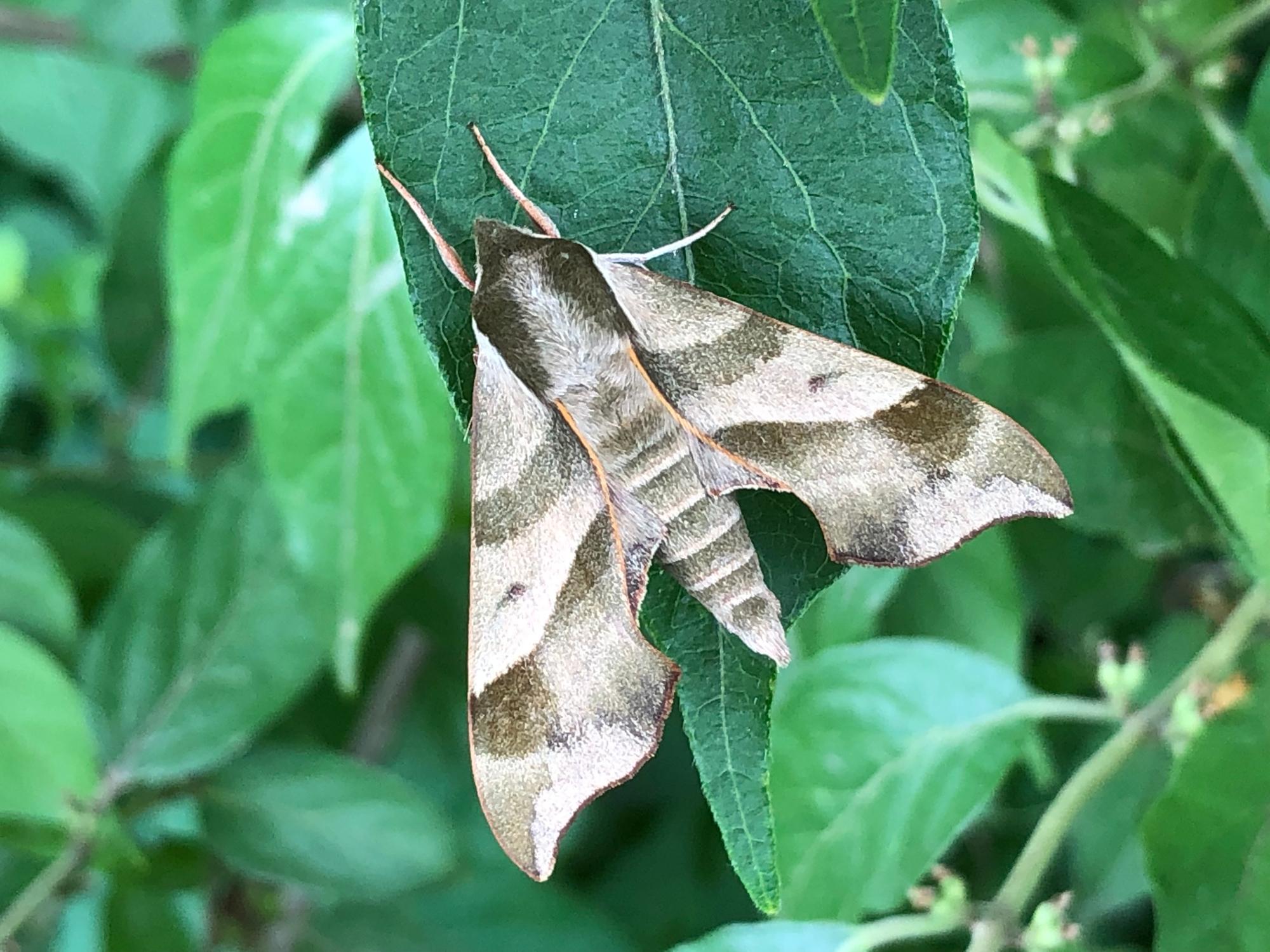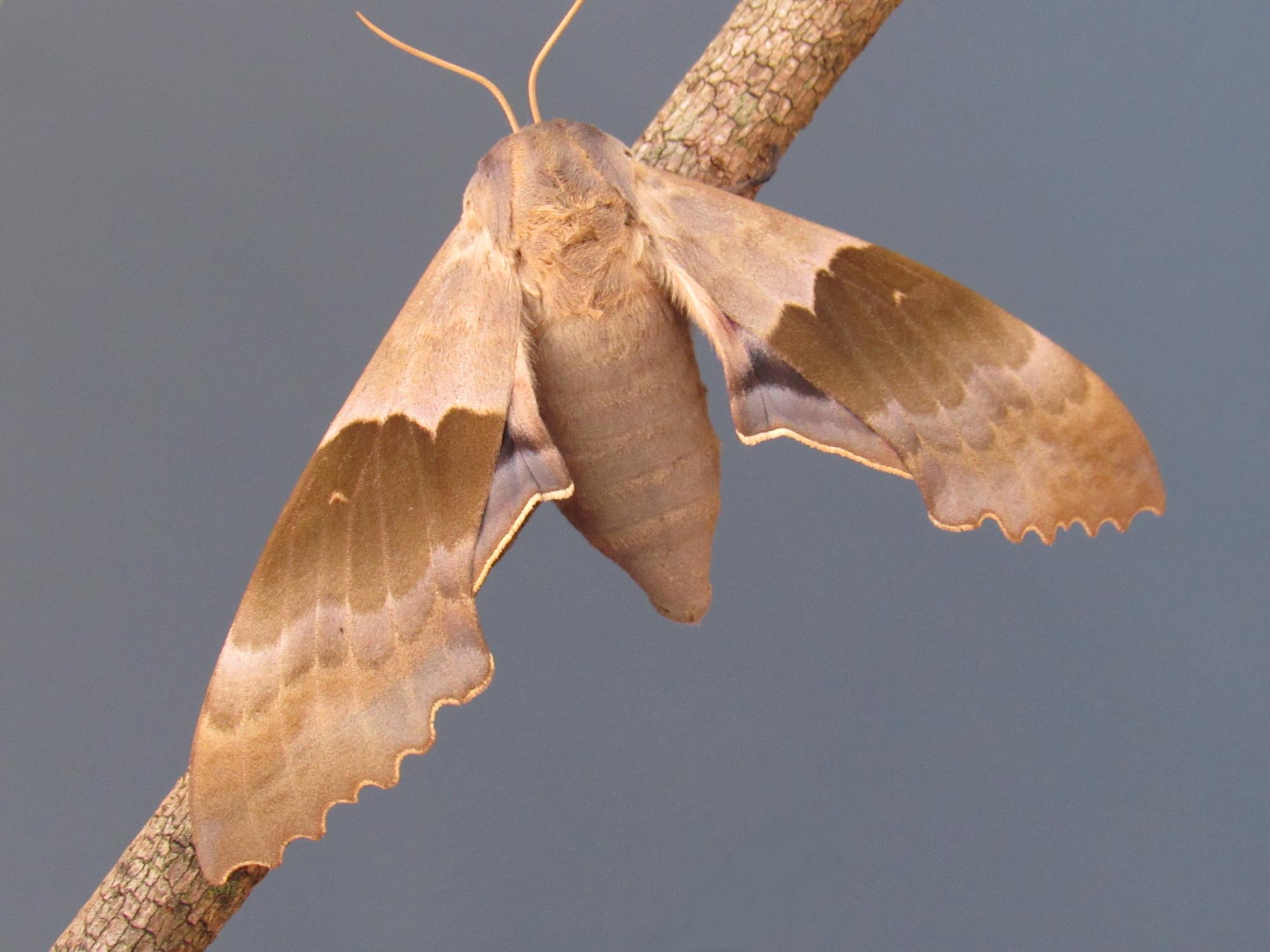SPHINX MOTHS #1: PANDORUS, VIRGINIA CREEPER, AZALEA, & Modest SPHINX
Pandorus Sphinx moth (also known as the Pandora Sphinx). This is one of our largest and most beautiful sphinx moths.
Virginia Creeper Sphinx, also known as the Hog Sphinx. This is one of our most common sphinx moths.
Another Pandorus Sphinx moth, showing his hindwings. I have found these moths from July through early October.
Pandorus Sphinx moths feed on wild grape and Virginia creeper vines, both of which are abundant near my house (which explains why I often find these moths at my lights).
Azalea Sphinx, photographed at Hocking Hills (eastern Ohio). I have found a couple of these moths at Hocking Hills in May, but I have not yet found this beautiful, rosy-pink species in our area.

Virginia Creeper Sphinx, hanging out at Spring Lakes Park in Bellbrook.
Modest Sphinx moths have patriotic red, white, and blue colors on their hindwings, but the colorful hindwings are usually not visible when the moth is at rest.
Virginia Creeper Sphinx moths have orange hindwings (usually hidden while the moth is at rest).

This is a Modest Sphinx moth, also known as the Big Poplar Sphinx. These are very large moths. The individual at left is the only one that has ever shown up at my home lights (June 4, 2024).
I find numerous Virginia Creeper Sphinx moths at my UV lights, every month from May through September.
Fresh individuals have a dark, metallic green color.